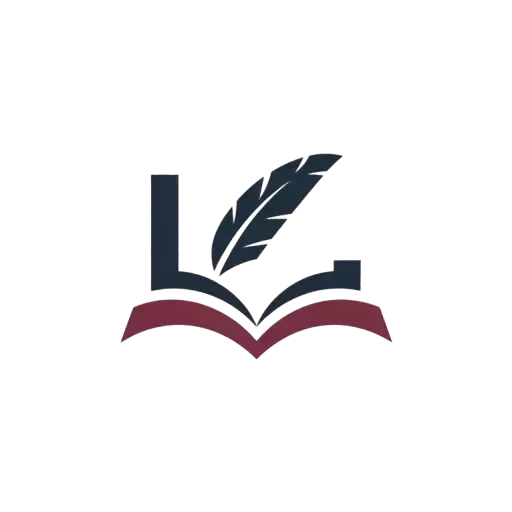Cultural studies profoundly impacted literary criticism by analyzing the role of literature within wider systems of meaning, power, and social inequality. This approach examines texts as crystallizations of broader cultural tensions – from hegemony to resistance. In this guide, we’ll explore the origins of cultural studies, its interdisciplinary methods, key concepts, and its enduring influence on literary scholarship.
Table of Contents
The Rise of Cultural Studies
Cultural studies coalesced in the 1950s-60s through Marxist-influenced British scholars like Raymond Williams, Richard Hoggart, E.P. Thompson and Stuart Hall. They aimed to understand contemporary culture by connecting textual artifacts to economic, social and political contexts.
As an interdisciplinary movement drawing on sociology, media studies, anthropology, history and critical theory, cultural studies analyzes cultural production and consumption within their social settings and ideological frameworks.
Some founding motifs included:
- Studying lived experience and vernacular cultures versus high arts
- Linking cultural forms to material conditions and class relations
- Uncovering the workings of hegemony and ideology in cultural narratives
- Exploring resistance and reinterpretation from subcultures and the masses
So texts and objects became evidence of social forces. Cultural studies ties the aesthetic inherently to the political. It confronts issues of domination, access, representation and social change head-on.
Core Concepts and Common Techniques
Cultural studies encompasses diverse theories and methods. But some recurring concepts underpin cultural analysis:
Hegemony
The subtle ways dominant groups exert ideological control and manufacture consensus through cultural narratives that get internalized as “common sense.”
Subculture
Shared identities, rituals, codes and meanings that take shape within marginalized groups as acts of resistance.
Ideology
The values and beliefs implicit within cultural forms that frame how we make sense of the world in ways that uphold power structures.
Interpellation
How ideological narratives recruit or “hail” subjects into accepting dominant ideologies and social systems.
Representation
Examining patterns of representation in texts and images provides insight into social exclusions, stereotypes and cultural “othering.”
Textual Analysis
Close analysis of texts reveals cultural attitudes and tensions through tropes, characterization, language, themes, imagery and intertextual references.
Cultural studies relies on connecting micro-readings to macro conditions, and vice versa. Literary scholars draw heavily on these conceptual pillars.
Foundational Thinkers
Several key thinkers helped establish cultural studies’ conceptual contours:
Raymond Williams – Founding figure known for linking culture and materialism through concepts like “structures of feeling.”
Culture and Society – Seminal text tracing connections between art and socio-economic conditions from 1780 to 1950.
Stuart Hall – Jamaican theorist central to British cultural studies. Developed influential concepts like encoding/decoding and articulation.
Encoding/Decoding – Hall’s classic essay explores media messages and audience interpretation through a cultural theory lens.
bell hooks – Pioneering black feminist scholar whose works like Ain’t I a Woman critically examined the politics of race, gender, class and popular culture.
Antonio Gramsci – Marxist thinker who influenced cultural studies through his theorization of cultural hegemony and the role of intellectuals.
The Prison Notebooks – Gramsci’s prescient writings on hegemony and political/cultural struggle composed while imprisoned.
These thinkers helped coalesce cultural analysis at the intersection of critical theory, history and anthropology. Their concepts remain touchstones for cultural critique.
Applications to Literary Criticism
So how does cultural studies enhance literary analysis concretely? Below are some impactful critical approaches it has fostered:
Hegemonic Analysis
Looking at how literary works grapple with, subvert or succumb to dominant ideologies. Whose values and worldview shape the text? What cultural narratives are perpetuated or questioned?
Reader-Response Theory
Examining how different audiences decode and negotiate cultural meanings in texts based on their unique social positions and contexts.
Feminist Criticism
Analyzing literature through lenses of gender, patriarchy, and the politics of domesticity, motherhood, suffrage, reproductive rights, and more.
Postcolonial Criticism
Probing the cultural legacy of colonialism and imperialism through concepts like Othering, hybridity, and double consciousness.
Critical Race Theory
Confronting the role of literature and racism in upholding systems of oppression and white supremacy.
Queer Theory
Challenging heteronormative assumptions by examining diverse sexualities/identities and how texts construct normalized gender roles versus “deviant” others.
Marxist Analysis
Analyzing the circulation of capital, class divisions, and labor relations through literary depictions of social worlds.
The list could continue…cultural studies opened vast interdisciplinary vistas, positioning the literary work within networks of cultural meaning and power.
Limitations and Critiques
For its paradigm-shifting influence, cultural studies has drawn critiques:
- Prioritizing popular culture over “high art”
- Obscuring aesthetics with political interpretation
- Totalizing narratives about domination and resistance
- Jargon-heavy theorization alienating general readers
- At times dense, abstract, and moralizing frameworks
Critics argue cultural studies risks reducing art to ideology and overlooking creative ambiguity or plural meanings. The field continues addressing these limitations through rigorous self-reflection.
Lasting Impact
Though not without flaws, cultural studies irrevocably expanded literary criticism’s scope beyond formal aesthetics to wider cultural dynamics. It engendered new socially attuned critical subfields like:
- Critical race theory
- Postcolonial studies
- Gender/queer studies
- Disability studies
- Ecocriticism
- Digital humanities
And methodologies from deconstruction to audience reception studies. Cultural studies also importantly championed the politics of representation and voices of marginalized groups.
Its interdisciplinary approach continues evolving new knowledge and interpretive practices. Cultural studies permanently realigned literary scholarship with deeper social contexts.
Conclusion
From Raymond Williams to Judith Butler, cultural studies compelled literary critics to situate texts within webs of power, meaning, and lived struggle. It connected aesthetic artifacts to economic conditions and ideological formations.
This expansive contextual approach revealed new political stakes in interpretation. Cultural studies forged more ethically attuned criticism – interpretation as an act of understanding layered dynamics of identity, otherness, dominance and resistance across texts and cultures.


